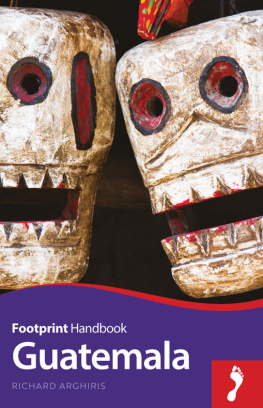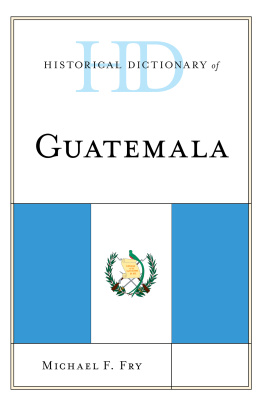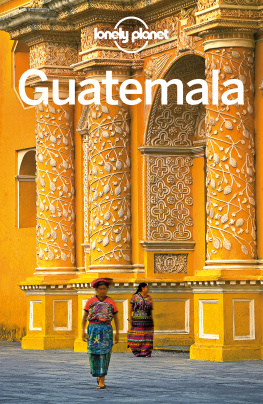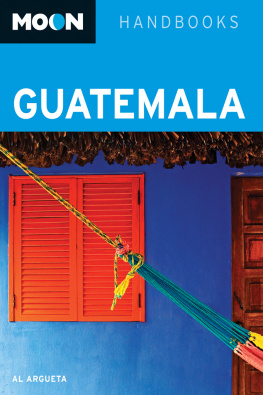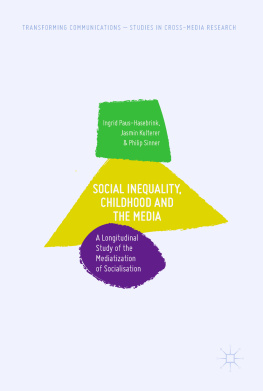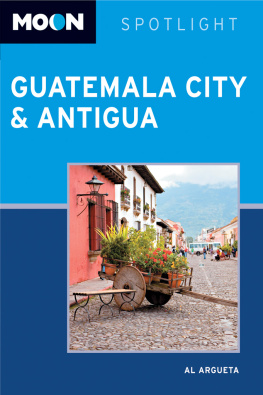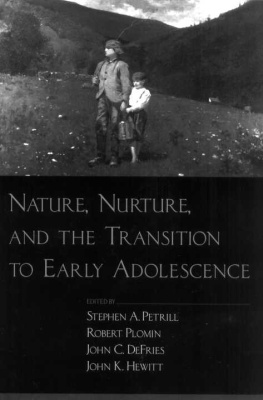Children of the Urban Poor
Children of the Urban Poor
The Sociocultural Environment of Growth, Development, and Malnutrition in Guatemala City
Francis E. Johnston and Setha M. Low
First published 1995 by Westview Press
Published 2018 by Routledge
52 Vanderbilt Avenue, New York, NY 10017
2 Park Square, Milton Park, Abingdon, Oxon OX14 4RN
Routledge is an imprint of the Taylor & Francis Group, an informa business
Copyright 1995 Taylor & Francis
All rights reserved. No part of this book may be reprinted or reproduced or utilised in any form or by any electronic, mechanical, or other means, now known or hereafter invented, including photocopying and recording, or in any information storage or retrieval system, without permission in writing from the publishers.
Notice:
Product or corporate names may be trademarks or registered trademarks, and are used only for identification and explanation without intent to infringe.
Library of Congress Cataloging-in-Publication Data
Johnston, Francis E.
Children of the urban poor: the sociocultural environment of
growth, development, and malnutrition in Guatemala City / Francis E.
Johnston and Setha M. Low.
p. cm.
Includes bibliographical references.
ISBN 0-8133-8633-0
1. Poor childrenGuatemalaGuatemalaLongitudinal studies.
2. Urban poorGuatemalaLongitudinal studies. 3. Malnutrition
GuatemalaLongitudinal studies. 4. Social ecologyGuatemala
GuatemalaLongitudinal studies. I. Low, Setha M. II. Title.
HV747.G94G835 1995
362.7086942dc20 94-32612
CIP
ISBN 13: 978-0-367-01102-4 (hbk)
To Dr. Robert MacVean whose professional career has been dedicated to the children of Guatemala and to the people of El Progreso whose struggles are depicted here
The DNP ( Desarollo del Nio Preescolar ) project was a joint effort of the Universidad del Valle de Guatemala , Guatemala City, and the University of Pennsylvania, Philadelphia, and its realization has depended on the collaboration and assistance of many individuals from both institutions. Some acted in administrative and organizational roles, helping to manage budgets, data bases, and logistic details. Others assisted in the collection and analysis of data, many as students of the two, as well as other, universities. And we have relied to a significant degree on the advice of other colleagues, from Guatemala and the USA, who have made suggestions, offered critiques, and listened to our problems. To all of these colleagues and friends, we offer our thanks and gratitude.
We would like to note the following persons who played particularly important roles in this project and who contributed in a variety of ways to its success: Yetil Baessa (Project Director), Maria Regina Vecinos (Field Coordinator), Wendy Bayliss, Barry Bogin, Lydia Greiner, Robert Klein, Bruce Newman, Frances Porras, William Reid.
In addition, Jason Hallock participated in the management of data and prepared the manuscript as a camera-ready copy. Marie Gee and Brigita Boveland prepared the domestic economy analysis.
Finally, we acknowledge the assistance of those agencies that have provided grants to help support the research reported here: Fundacin de la Universidad del Valle de Guatemala, International Development Research Centre, The Population Council, University of Pennsylvania Research Foundation.
While many have contributed to the realization of the DNP project, we accept sole responsibility for any errors that may be found herein.
Francis E. Johnston
Setha M. Low
1
The Sociocultural, Political, and Economic Context of Malnutrition and Child Development in Guatemala
Guatemala suffers from a set of intractable problems: a society highly stratified along both class and ethnic lines...appalling poverty for the lower stratum, a pronounced urban-rural dichotomy, repressive and unstable government, and extremist political groups on either end of the political spectrum who are committed to using violence ( Colburn 1986 : 243).
Guatemala as a developing country shares with many other nations a series of social, economic, and political problems and historical circumstances that create an environment in which children are vulnerable to poor health and malnutrition and other development related maladies. This introductory chapter addresses the concept of environmental vulnerability by examining the sociopolitical, ethnohistorical and sociocultural context of this ecology of malnutrition. The malnutrition of children is attributed to a legacy of social and political inequality, economic relations, discriminatory social practices, and uneven development, causing rapid urbanization and migration and military regimes of violence and terror. These realities provide a backdrop of for the study of children's growth and development within an urban resettled neighborhood on the edge of Guatemala City.
We begin with this broad picture in order to capture some of the complexity of what constitutes the sociocultural environment and to immerse the reader in historical and political conditions of the grounded reality of our families' everyday lives. Without this ethnohistorical, sociopolitical and economic perspective it is difficult to understand and evaluate the current conditions of malnutrition in that present circumstances have been heavily influenced and structured by past social relations. In the final sections of this chapter, the immediate setting of our study is described including the circumstances of the 1976 earthquake and the construction of communities for homeless urban residents and migrants to Guatemala City.

Map of Guatemala showing major cities.
Guatemala is a Central American republic characterized by economic vulnerability, a bicultural population, high rates of evangelical conversion, and low rates of literacy not untypical of the developing world. It is the most populous country in Central America with over 9.1 million people residing in an ecologically diverse landscape of 42,000 square miles. most Third World developing countries, Guatemala is dependent on a small number of export agricultural crops, and is therefore vulnerable to even slight changes in world market prices and shifts in the direction of the international economy.
The people of Guatemala are made up of "Indian" (indigenous Maya) and "ladino" populations. This system of sociocultural classification is complicated by conflicting interpretation and manipulation of these labels (Crandon-Malmud 1991; Smith 1990b). Smith clarifies this socially and politically constructed distinction as:
On the one hand there are "Indians," a social category used by social scientists, census officials, and non-Indian Guatemalans -- but by very few Indians. Indians recognize themselves as members of specific communities, which usually, but do not always correspond to the smallest administrative diversion, the municipio. On the other hand, there are "ladinos," a social category used by social scientists, census officials and Indians, and some but not all ladinos. The first three groups define ladinos as those Guatemalans who are not Indian. But people within that residual category often distinguish themselves or one another as significantly different subcategories: redressed Indians, "old" ladinos, whites or Europeans (1990b: 3-4).


